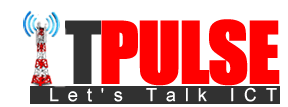The landing and unveiling of the Google-owned Equiano Subsea Cable from Lisbon in Portugal to Lagos Nigeria and other landing stations in Swakopmund, Namibia and Cape Town, South Africa will accelerate Nigeria’s government’s pursuit of a fully digital economy.
This is because Equiano will be the first subsea cable to incorporate optical switching at the fiber-pair level, rather than the other traditional approach of wavelength-level switching. This singular feature that comes with the Equiano Cable will greatly simplify the allocation of cable capacity, giving the flexibility to add and reallocate it in different locations as needed.
In fact, Equiano will be the first spatial-division multiplexed (SDM) cable deployed along this route, allowing for a greater design capacity of 144 Tbps. The relative cost of deploying the Equiano cable with respect to its capacity will therefore be lower than the other cables built to date.
This is a boost for connectivity that Nigeria highly needed, a catalyst for growth, job creation and sustainability in its digital economy pursuit.
 With the landing of the Equiano Subsea Cable, the average internet speed in Nigeria is set to rise, it will result in major price reductions for consumers, improving the affordability of access, which will ultimately result in greater internet penetration.
With the landing of the Equiano Subsea Cable, the average internet speed in Nigeria is set to rise, it will result in major price reductions for consumers, improving the affordability of access, which will ultimately result in greater internet penetration.
A five years (2021-2025) projection of Internet penetration with the landing of the Equiano Subsea Cable indicates that Nigeria’s average Internet speed will grow from 14Mbps to 77Mbps. The country will also see a 21 percent decline in internet retail prices and a 7points increase in internet penetration.
Also, by 2025 real GDP is expected to be higher than it otherwise would have been by $11.1billion, 1.6 million jobs created and 2.8 million tonnes of CO2 emissions to be saved same period.
Meanwhile, as a neutral player who does not directly provide broadband access to end users but instead partners with multiple key telecom players such as telcos or infrastructure operators, Google’s owned cable will ensure that the cable’s additional capacity benefits the most end-users and businesses across the African continent.
This is achieved when key telecom players acquire capacity from the Equiano cable on an indefeasible right of use (IRU) basis. This allows Google’s partners to benefit from Equiano’s additional capacity over a pre-agreed, long-term time frame for their own use or to lease to third parties. Terrestrial infrastructure players may also avail their fibre routes to Google in exchange for a portion of Equiano’s capacity.
Nigeria also stands to gain more as Equiano’s cable landing stations will operate on an open-access and non-discriminatory model where all terrestrial players can interconnect with them if they wish to do so. By guaranteeing open access, Equiano aims to encourage more efficient and cost-effective equipment, ultimately resulting in better outcomes for consumers, businesses and the economy more broadly.
 What is Equiano bringing to the table?
What is Equiano bringing to the table?
The decision to invest in Equiano is based on five key factors:
Ageing cable infrastructure
Africa is home to over 20 submarine cables, some of which began operations almost 20 years ago and are nearing the end of their lifecycle. Equiano is a state-of-the-art cable that leverages next-generation technology to provide significantly more capacity than the last set of cables built to serve the continent.
Growing demand for data
Africa’s rapidly growing population and internet user base – combined with more intensive use of the internet – meaning that the current submarine cable systems will be unable to meet demand beyond the next few years. Investing today means Google is well prepared to serve tomorrow’s users.
Better performance
Low latency forms the cornerstone of a good user experience. The increased bandwidth Equiano will bring to Africa will allow for more latency-sensitive products to function and be developed.
Redundancy
Africa currently has relatively few submarine cables connecting it to other geographies. The majority of countries on the continent are served by only one or two cables. As outlined in the case study on West Africa above, if or when cables are damaged, break or undergo repairs, users can experience significant connectivity disruptions. Building new cables such as Equiano, therefore, improve the consistency and reliability of connectivity.
Create diverse and scalable paths to reach more users
As part of the construction design of Equiano, several branching units will be placed on the seafloor along Africa’s Atlantic coast. By having more control over the design, construction, and upgrade process of the cable system, Google will be able to quickly deploy additional branches to bring more content closer to end-users.




